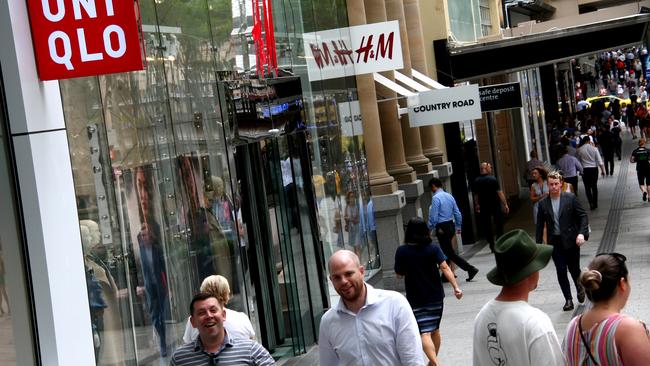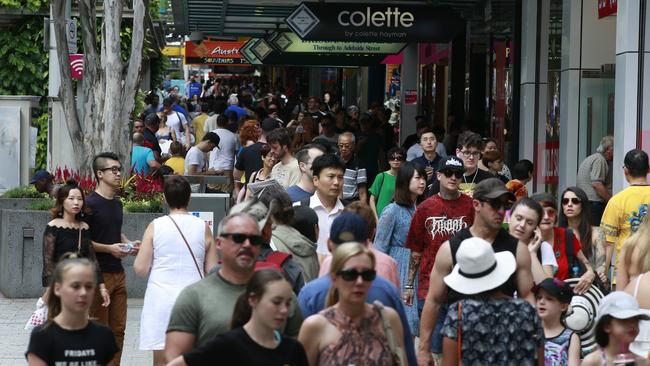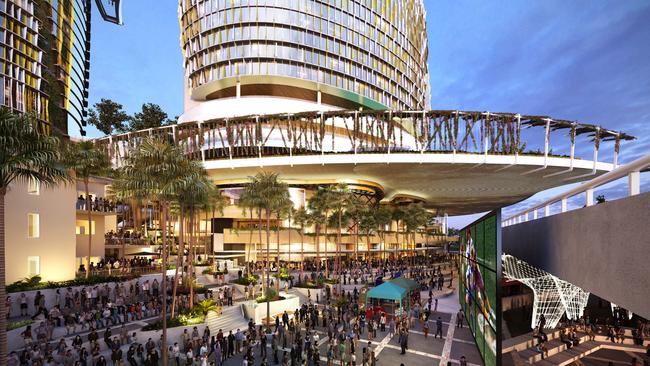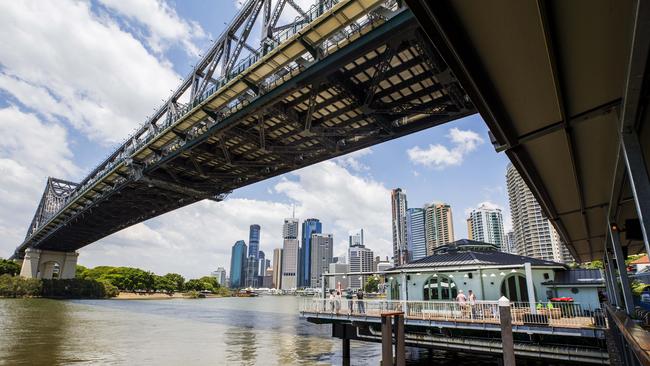New era of shopping and dining beckons as Brisbane CBD’s retail reinvention shapes up
From online shopping to major new developments, a perfect storm of forces will reshape Brisbane’s inner-city retail sector, which supports 80,000 jobs.

Prime Site
Don't miss out on the headlines from Prime Site. Followed categories will be added to My News.
THE reinvention of the Brisbane CBD’s retail property sector is in full swing, and set to forever reshape the city’s shopping and dining landscape.
According to a new report, an expected market shift arising from the Queens Wharf Casino and Cross River Rail projects is among the key drivers for the change.
High retail vacancy in the CBD as well as the continued disruption from ecommerce and changing consumer behaviour and needs also have been major catalyst.
The latest Colliers International Retail Research and Forecast Report indicates the combination of forces was shaping a “new era” for the sector, which supports 80,000 jobs across the city.

In a bid to improve consumers experience and secure leases from solid retail operators, stakeholders are transforming under-utilised areas and implementing repositioning or redevelopment strategies.
“This is an exciting time for major retail stakeholders as they are able to reposition their centres taking advantage of the current market to futureproof their assets,” said Colliers’ associate director of retail leasing Luke McGrath.
QueensPlaza has been locking in tenancies with exclusive brands (including Celine Sunglasses, Christian Dior and Yves Saint Laurent).

Property Council of Australia figures show retail vacancy in the CBD reached 11.7 per cent for March 2019, well above Queensland’s overall retail vacancy of 5.97 per cent.
“Ecommerce retail activity has been a key disrupter for the fashion industry and one of the contributors to vacant space in the CBD area,” Mr McGrath said.
“Also, as the construction of the Cross River Rail is set to spread the CBD pedestrian traffic from north to south, some retail operators are making cautious leasing decisions awaiting to see the impact on retail demand and foot traffic dynamics.”

But Mr McGrath said the city’s transport infrastructure pipeline — including the Cross River Rail and the Brisbane Metro — supported the transformation of Brisbane into a metropolitan city needing “a more sophisticated, adaptable and mature retail sector”.
“We are seeing new retail trends wherein under-utilised areas in hot spots across the city are revitalising, transforming and becoming a popular destination for locals and visitors,” he said.
“One example is the $109 million Howard Smith Wharves precinct located at Boundary St and providing an exclusive riverfront dining experience. The precinct commenced operations in late 2018, marking the beginning of a new era of dining and lifestyle in the Brisbane CBD.

“Another example of the CBD area being revitalised is The Usher Lane development, located at 171 Edward St, with proposed plans for a dining, cafe and bar premises.”
Colliers’ research manager Karina Salas, the author of the report, said Brisbane CBD gross face rents had remained flat over the past 12 months, currently standing at $4250/sq m and sitting 9.6 per cent below the highest average of $4700/sq m reached in 2017.
“The steady rents and the increase in incentives to an average of 19 per cent (from 15 per cent a year ago) reflect moderating leasing conditions,” she said.


